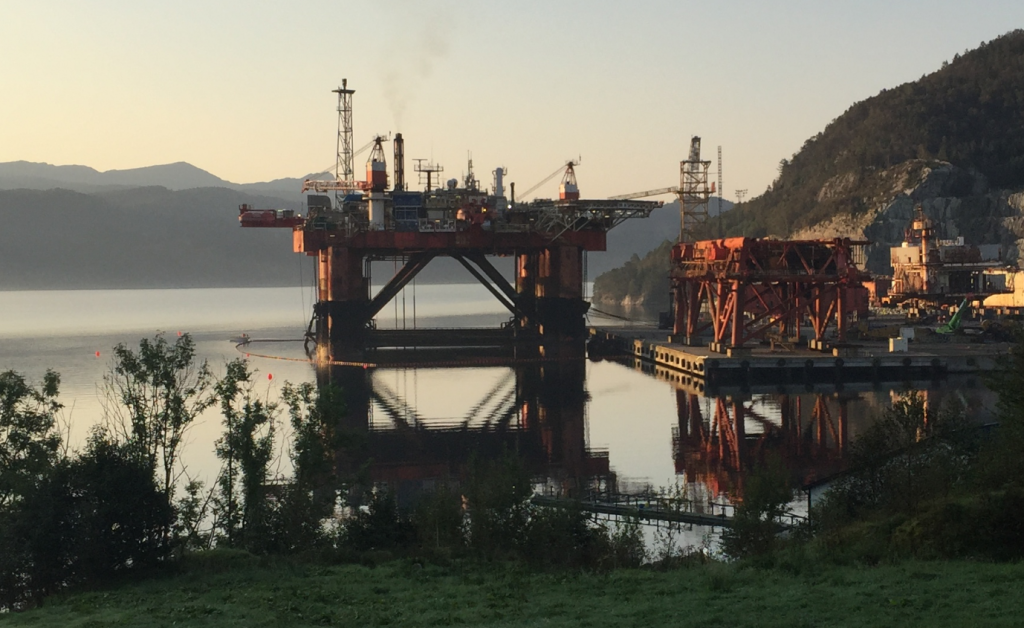
Cost cuts are painful, but for Norway’s oil industry making every penny count has also yielded a surprising production windfall.
Thanks to improvements from cheaper, faster drilling to greater regularity in the operation of production platforms, producers pumped 85,000 barrels a day more crude than expected during the past two years, or 6 percent above forecast, according to industry regulator, the Norwegian Petroleum Directorate. And it gets better: this week the NPD raised its output forecast for the 2017 to 2020 period by 8 percent, an average of 110,000 barrels a day.
That’s the same as 2015 production from the country’s third-biggest field — the Snorre deposit in the North Sea — and almost as much as the iconic Ekofisk field, the discovery that kicked off Norway’s oil age.
“It’s impressive,” Nordea AB’s Oslo-based oil analyst Thina Saltvedt said in a phone interview Friday. “When the crisis came, Norway was efficient in doing something about it.”
As investment in Norway’s oil industry continues to decline over the next two years, lower costs and greater efficiency are providing the silver lining in a downturn that’s been more painful for western Europe’s biggest producer than the financial crisis. While cost estimates for seven large projects have been cut in half over the past two years and it’s been clear that efficiency gains were helping producers beat output forecasts, the NPD’s annual five-year prognosis released on Thursday was the first to show the impact on current and medium-term production.
“We’re starting to have faith that this is possible,” the NPD’s Director General Bente Nyland said in an interview in Stavanger following the presentation of the report. “The drilling campaigns on producing fields show that there’s a great focus among the companies to maintain production, and it’s paying off. It’s all about costs.”
Statoil ASA, the state-controlled producer that operates about 70 percent of Norway’s oil and gas output, has reduced the time it spends on one production well by 40 percent, cutting the cost by 30 percent, spokesman Ola Anders Skauby said. Last year, the company drilled 119 wells after planning for 113, and in 2015, 117 wells after planning for 95, he said.
“The improvement measures we’ve set in motion have yielded results,” Skauby said in an e-mail. “We’re planning better, working more efficiently and we’ve simplified the well designs.”
Huge Waste
Gas production also beat forecasts in 2016 by 10 percent, little changed from the 2015 record of 117 billion cubic meters. The NPD raised its forecast for gas output in the period from 2017 to 2020 by 4 percent.
The cost cuts also illuminate past practices, Nordea’s Saltvedt said. If producers can boost production and reverse expected output declines, and make future projects half as expensive as they used to be, what does that say about the way they operated before?
“It was a huge waste,” she said. “It must have been, when you look at these numbers.”
Recommended for you
